The New Carbon Cadex Road Wheelsystems Make No Compromises
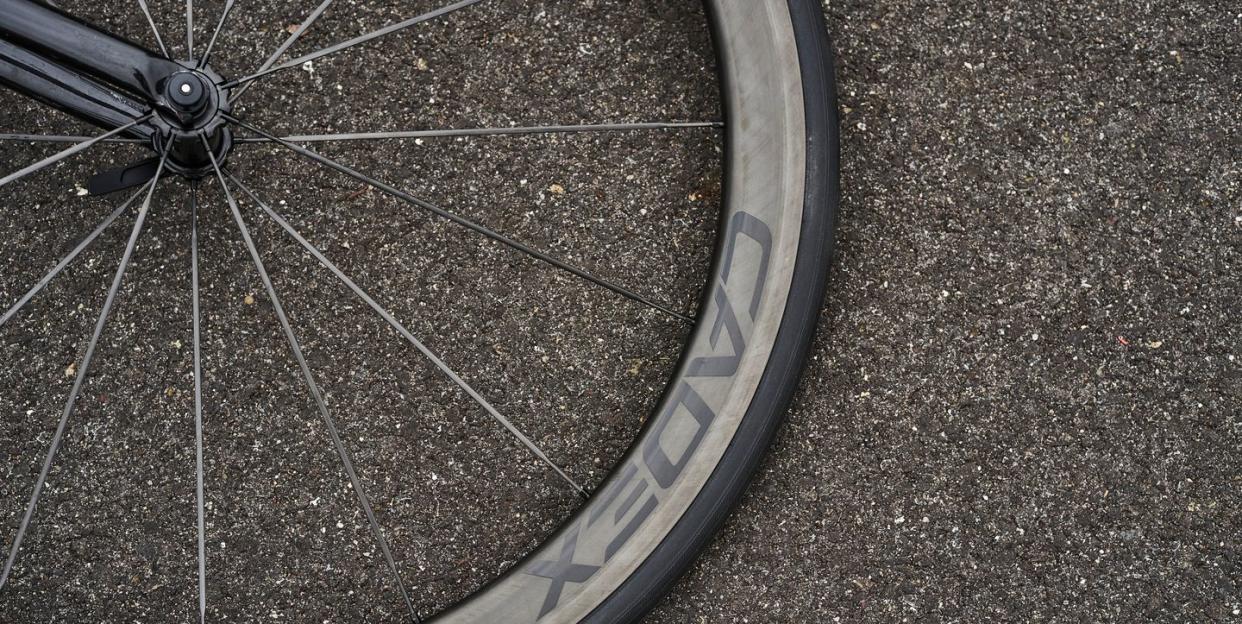
Takeaway: These are seriously impressive carbon wheels.
Carbon spokes save weight and smooth the ride
Available in 42mm and 65mm rim depths, tubeless and tubular
The hookless rim design is claimed to be lighter and stiffer than hooked
Price: $1,400 (front); $1,800 (42mm, rear), $2,000 (65mm, rear)
Weight: 588g (42mm front), 721g (42mm rear)
Giant’s new high-end component brand, Cadex, jumps into the crowded and competitive high-end wheel market with 42mm (all-around depth) and 65mm (aero depth) wheels, in both tubeless and tubular versions.
But let’s be clear, even though Giant’s bikes typically offer more for the money than many of its competitors, the company’s Cadex wheels are not cheap. At $1,400 for a front wheel in either size and $1,800 and $2,000 for a rear wheel (42mm and 65mm, respectively), the lowest price for a set is $3,200. That’s about the same price as Zipp’s NSW wheels, or Enve wheels with the brand’s carbon hubs. And while the Cadex wheels are much cheaper than Lightweight’s jaw-dropping $9,900 Fernweg, brands like Hunt offer wheels that seem similar (on paper) for significantly less.
But price is not the initiative—the whole goal is to create the best-performing product. “We spent a lot of time redesigning each component of the wheel to make the rider more efficient,” said head of Cadex product and marketing, Jeff Schneider. Below, he explains how they created what they call the lightest, stiffest, and toughest wheels on the market—component by component.
Spokes
Most wheel makers use stainless steel spokes, which are incredibly strong but also a bit flexy. To combat flex, you’d have to add material (i.e. weight). Cadex opted to design a directional, aero carbon spoke that is, according to Schneider, 46 percent lighter than a DT Swiss aerolite stainless steel spoke and has 100 grams less rotational weight. Because the spokes are carbon, designers can run the material at a higher tension, which results in a stiffer wheel.
The lacing pattern is claimed to prevent rotational loss of power. When you put a load on the free-hub body and it turns, there is inevitably a teensy amount of windup to the hub before it translates out through the spokes to the hub, resulting in a little bit of lost power. But because of the overlapping angles at which they laced the carbon spokes, the tensioning of the two overlap with no gap between where energy can be lost.
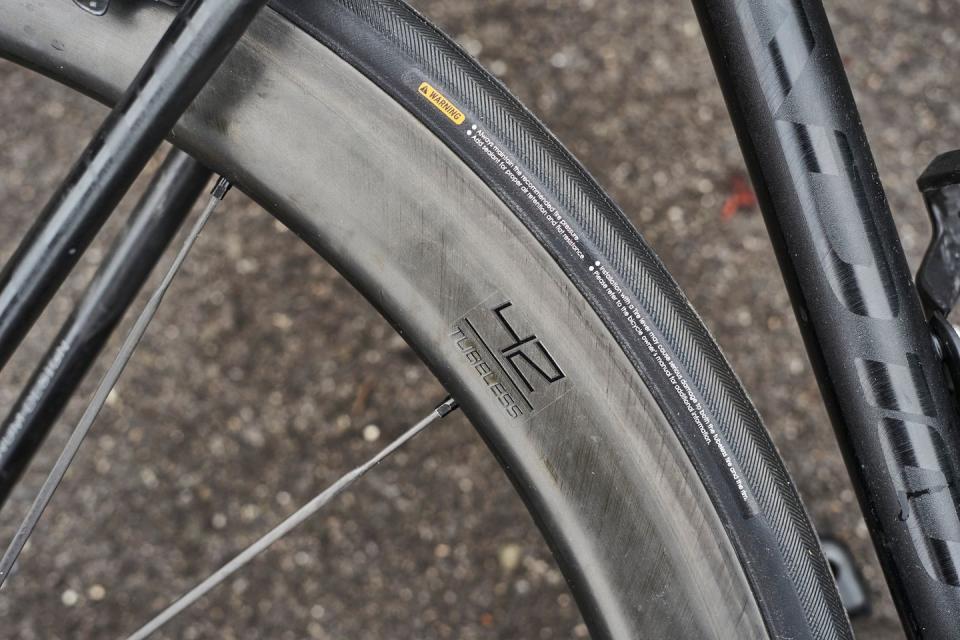
The effect of the carbon spokes and angles was something I noticed from the moment I started pedaling—the acceleration is unmatched by any wheel I’ve ever ridden. They have such a responsive snap; they engage as soon as your instincts do when someone attacks, which allows you to follow without second-guessing yourself. They gave me serious confidence. And not only do they jump when you jump—they want to keep on going. They invite you to go faster and faster, and they’ll keep on accelerating until you can’t.
Another great spoke detail: They’re not bonded to the rim, so if you break one, you can replace it.
Rim
These wheels employ a hookless rim, a design that requires less material so it’s lighter weight. The tightness of the shape between the tire (it’s only compatible with Cadex tubeless tires, but also comes in a tubular version) and the seat of the rim is what holds it on, surprisingly easy to get on but very difficult to get off (I tried, and it was a two-man job). The tires are just as stick-to-your-wheels as tubulars would be when you flat because of how tightly matched the size of the tire is for clinging to the non-hooked rim. That said, these rims are meant only to be used with tubeless tires.
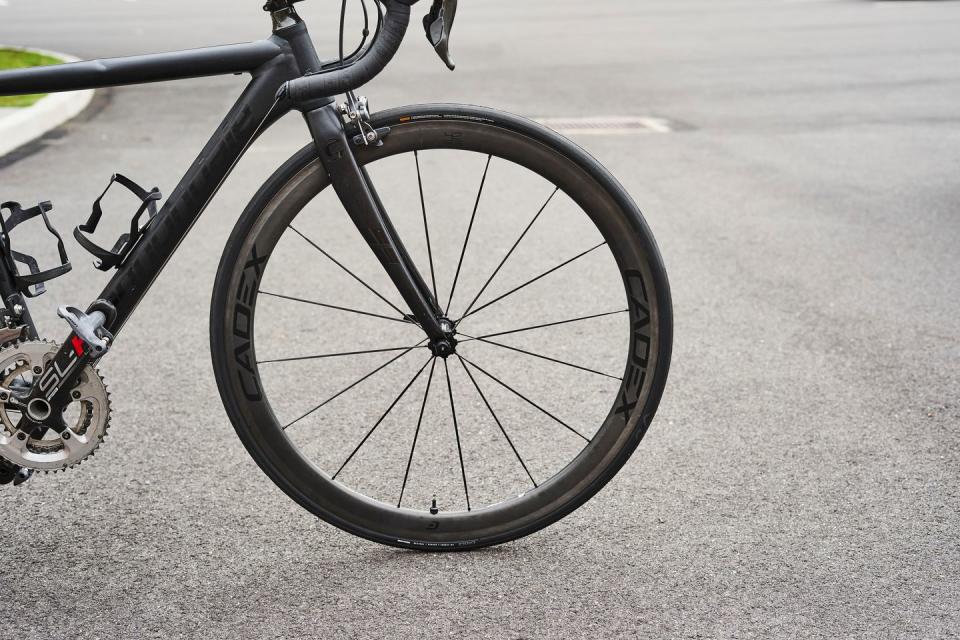
Hub
Cadex used a ratchet-driver hub body with 30 teeth and a fixed ratchet on one side. While many high-end hubs utilize an 18-tooth ratchet driver, the 30-tooth offers, it claims, a 34 percent increase in torque load, and quicker engagement. The company also fussed over the mechanism within the hub in order to decrease the speed lost due to friction when you are coasting. One thing that did bother me about the ratchet was its volume: It clicked so loudly, I had to soft pedal and brake at the same time when approaching stop signs in order to hear oncoming cars. But on the bright side, I didn’t startle any pedestrians, because they definitely heard me coming.
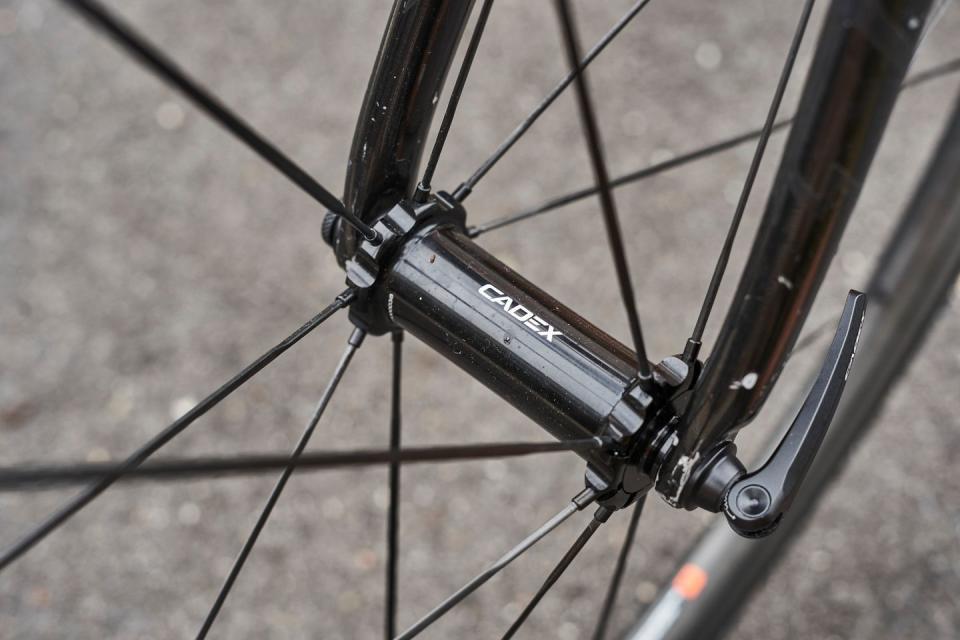
Tire
The Cadex Race Tubeless tire comes in three sizes: 23c, 25c, and 28c, and cost $100 apiece. A single 23c tire weighs 255 grams. They are tubeless and can self-heal if there’s sealant inside after a tiny puncture, with additional flat resistance coming from a Kevlar belt under the tread. As a relatively light rider, I don’t get flats very often, and I definitely didn’t get any on the Cadex Races (but now that I’ve told you that, I will almost certainly flat this week—unless I keep riding these, that is). And you can always try the Cadex tires on wheels you already have (hooked or hookless, with or without tubes). You don’t necessarily need to buy the Cadex tires to run the wheels, either. Currently, Giant, Schwalbe, and Maxxis make tires that also fit (for safety reasons, you should use hookless and tubeless tires on these rims).
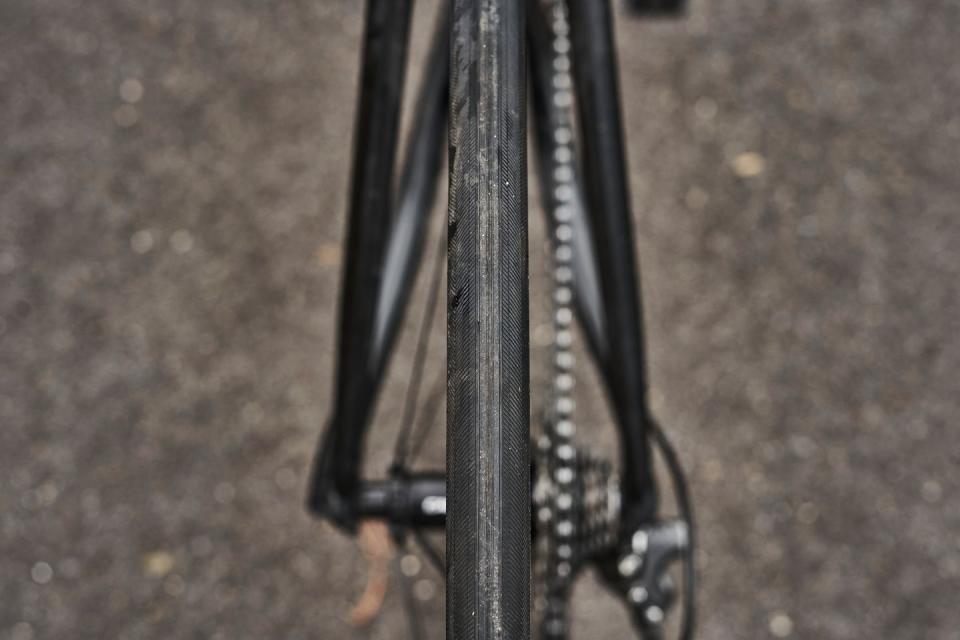
Ride Impressions
I put a set of the 42mm-deep rim-brake wheels—Cadex is one of the only brands launching new rim-brake wheels in the disc-brake era—with 23c tubeless tires on my eldery Cannondale CAAD10 with the obligatory ding in the top tube (knowing full well the irony of the situation), and it felt like a brand new dream bike.
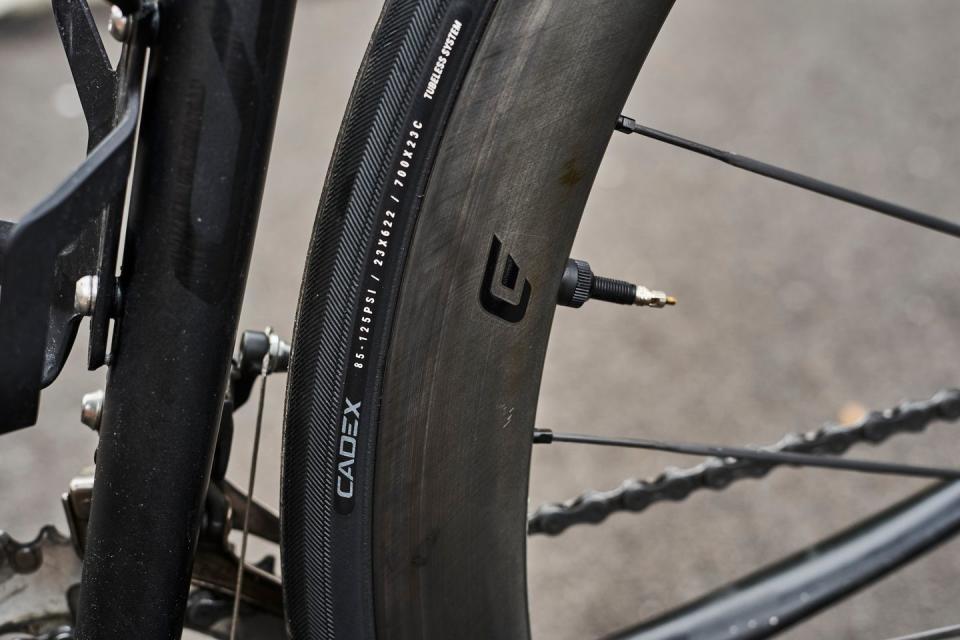
It was quicker up hills and smoother over bumps, but where I could really feel the difference was when I accelerated: The wheels snapped from zero to 18mph lickety-split, and I could just keep picking up speed until I got tired, rather than having that lagging sensation as I fought to accelerate. I earned 16 Strava PRs on my go-to test route my first ride on them.
Cadex’s wheels are an investment, and they’re up against some established and proven competition. But with compelling designs and great performance backed by one of the most experienced manufacturers in the business, they’re a legitimate player that deserves a look.
You Might Also Like

